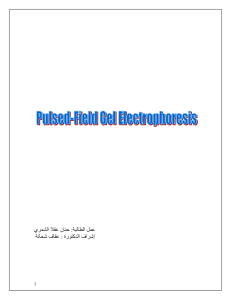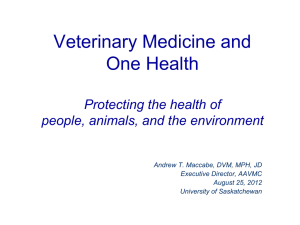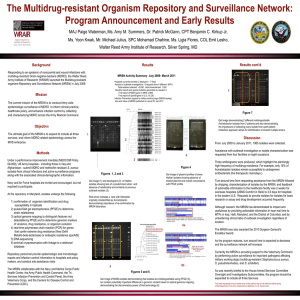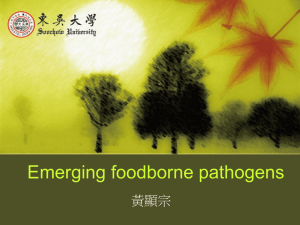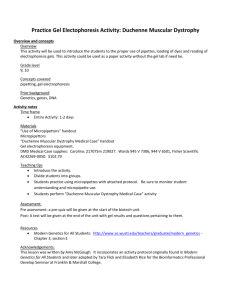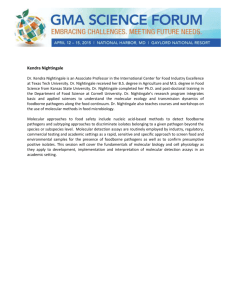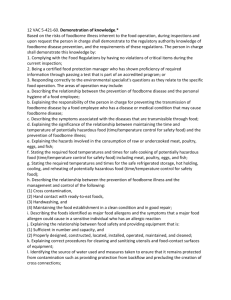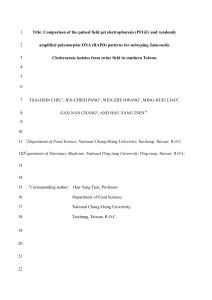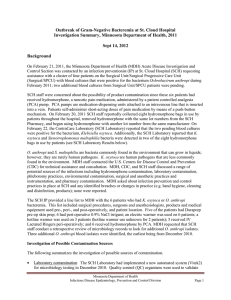Methods for Shiga toxin-producing Escherichia coli (STEC
advertisement
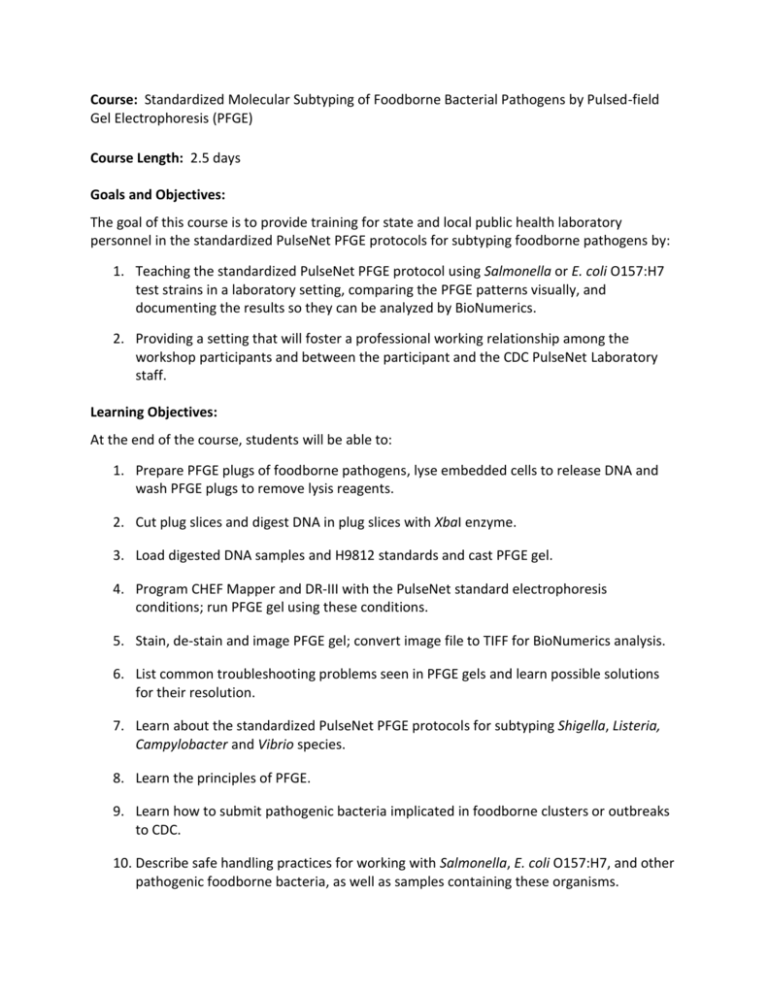
Course: Standardized Molecular Subtyping of Foodborne Bacterial Pathogens by Pulsed-field Gel Electrophoresis (PFGE) Course Length: 2.5 days Goals and Objectives: The goal of this course is to provide training for state and local public health laboratory personnel in the standardized PulseNet PFGE protocols for subtyping foodborne pathogens by: 1. Teaching the standardized PulseNet PFGE protocol using Salmonella or E. coli O157:H7 test strains in a laboratory setting, comparing the PFGE patterns visually, and documenting the results so they can be analyzed by BioNumerics. 2. Providing a setting that will foster a professional working relationship among the workshop participants and between the participant and the CDC PulseNet Laboratory staff. Learning Objectives: At the end of the course, students will be able to: 1. Prepare PFGE plugs of foodborne pathogens, lyse embedded cells to release DNA and wash PFGE plugs to remove lysis reagents. 2. Cut plug slices and digest DNA in plug slices with XbaI enzyme. 3. Load digested DNA samples and H9812 standards and cast PFGE gel. 4. Program CHEF Mapper and DR-III with the PulseNet standard electrophoresis conditions; run PFGE gel using these conditions. 5. Stain, de-stain and image PFGE gel; convert image file to TIFF for BioNumerics analysis. 6. List common troubleshooting problems seen in PFGE gels and learn possible solutions for their resolution. 7. Learn about the standardized PulseNet PFGE protocols for subtyping Shigella, Listeria, Campylobacter and Vibrio species. 8. Learn the principles of PFGE. 9. Learn how to submit pathogenic bacteria implicated in foodborne clusters or outbreaks to CDC. 10. Describe safe handling practices for working with Salmonella, E. coli O157:H7, and other pathogenic foodborne bacteria, as well as samples containing these organisms.
